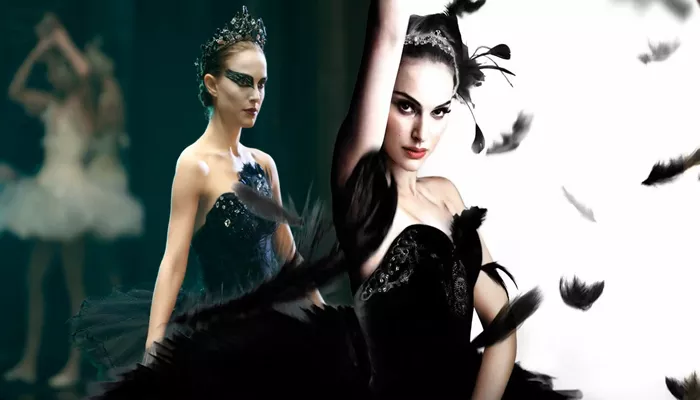In the psychological thriller Black Swan, Nina Sayers, played by Natalie Portman, is a talented ballet dancer who battles intense pressure to achieve perfection in her role as the Swan Queen. As the story unfolds, Nina experiences a series of disturbing psychological events, leaving viewers questioning her mental state. Does Nina have schizophrenia in Black Swan, a serious mental disorder characterized by a breakdown in thinking, emotional regulation, and behavior?
Understanding Schizophrenia
Schizophrenia is a chronic and severe mental health disorder that affects how a person thinks, feels, and behaves. People with schizophrenia may seem like they’ve lost touch with reality, which can be distressing for both them and their loved ones. Common symptoms of schizophrenia include:
Hallucinations: Sensing things that aren’t real, such as hearing voices or seeing things that others don’t.
Delusions: False beliefs, like thinking that one has special powers or is being persecuted.
Disorganized thinking: Difficulty organizing thoughts or connecting ideas logically.
Negative symptoms: A decrease in the ability to perform daily activities or an emotional flatness.
It’s important to note that schizophrenia is often confused with other mental health conditions that share similar symptoms, such as dissociative identity disorder, bipolar disorder, or severe anxiety.
Nina’s Symptoms in Black Swan
In Black Swan, Nina displays several behaviors and experiences that could resemble schizophrenia, but we also need to understand the context of her condition:
1. Hallucinations
Nina frequently experiences visual and auditory hallucinations. For example, she hears strange noises and sees unsettling images, including her doppelgänger, the darker “Black Swan.” These hallucinations blur the lines between her real and imagined experiences. Schizophrenia is often associated with such disturbances, but hallucinations in other conditions, such as severe stress or sleep deprivation, can also cause similar symptoms.
2. Delusions
Nina develops a sense of grandiosity as she becomes obsessed with securing the role of the Swan Queen. She feels pressure from her mother and her dance director to achieve perfection. Nina’s belief that she is both the White Swan and the Black Swan can be seen as a type of delusion, where she believes she has a dual, almost supernatural identity. While delusions are a hallmark of schizophrenia, they can also be seen in other psychological conditions, particularly in highly stressful environments.
3. Disorganized Thinking
Throughout the film, Nina’s thoughts become increasingly disjointed, and she struggles to separate reality from fantasy. This disorganized thinking is one of the symptoms of schizophrenia. However, in Nina’s case, it can also be attributed to her mounting anxiety, fear of failure, and the intense pressure she faces as a dancer. Her deteriorating mental state seems more related to stress and trauma than to a traditional psychotic breakdown.
4. Negative Symptoms
Nina becomes withdrawn, emotionally numb, and isolated from those around her. She exhibits a decline in her ability to connect emotionally with others, which is a key feature of schizophrenia’s negative symptoms. However, her emotional detachment might also reflect her struggle to maintain control in an overwhelmingly competitive environment.
Is Nina’s Mental Illness Schizophrenia?
While Nina demonstrates behaviors that could be seen in someone with schizophrenia, it’s important to consider other possible explanations for her condition. Her experiences may stem from a combination of factors, such as:
Extreme stress and pressure: Nina’s intense drive for perfection and fear of failure could trigger mental health breakdowns, which might mimic symptoms of schizophrenia.
Bipolar disorder: The extreme mood swings Nina experiences, from euphoric moments to deep despair, are characteristic of bipolar disorder, which can sometimes involve psychotic features.
Post-traumatic stress disorder (PTSD): Nina’s history of emotional abuse from her mother could cause her to dissociate or have flashbacks, resembling some symptoms of schizophrenia.
Conclusion
In Black Swan, Nina Sayers does exhibit certain signs of schizophrenia, such as hallucinations, delusions, and disorganized thinking. However, her condition seems to be a result of a perfect storm of intense pressure, emotional trauma, and psychological strain rather than schizophrenia alone. Her symptoms may be more reflective of an anxiety-related disorder or the psychological toll of an abusive, high-pressure environment.
While it’s tempting to label Nina’s condition as schizophrenia, it’s essential to remember that mental health is complex, and the film intentionally blurs the lines between reality and illusion. Nina’s jo
Related topics:
- Is Paranoid Schizophrenia A Personality Disorder?
- 14 Early Warning Signs Of Schizophrenia To Watch Out For
- Can Someone Develop Schizophrenia In Their 30s?


